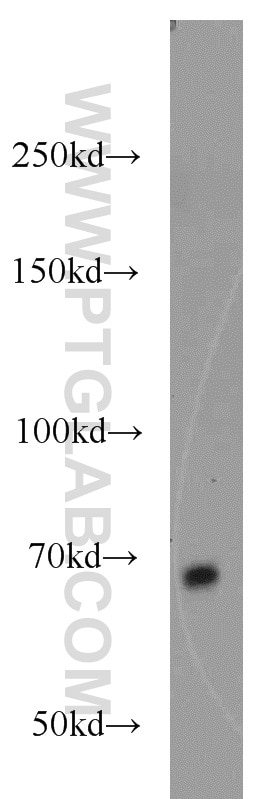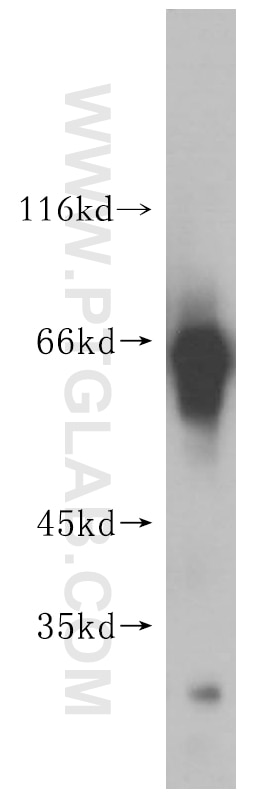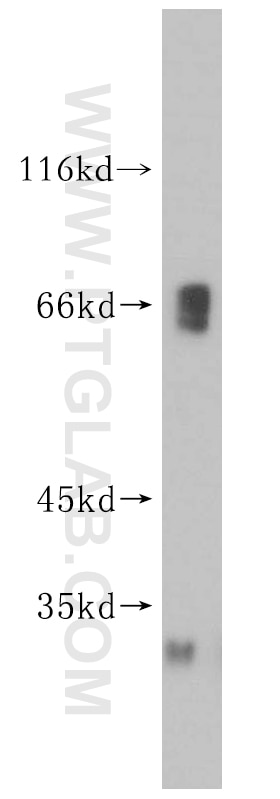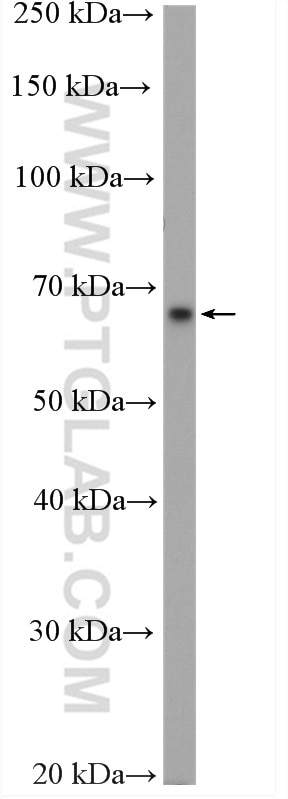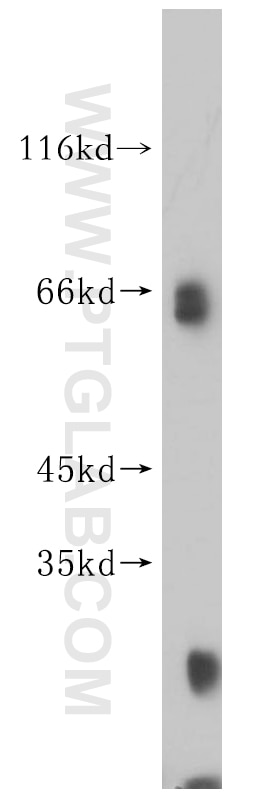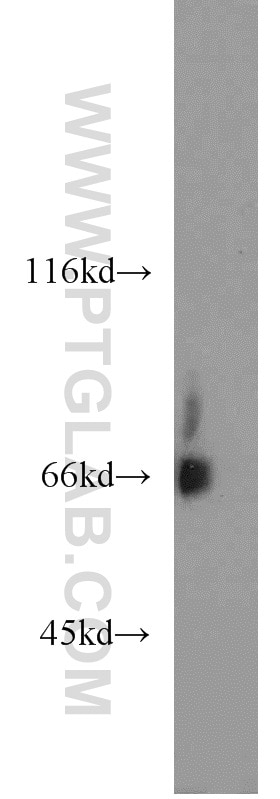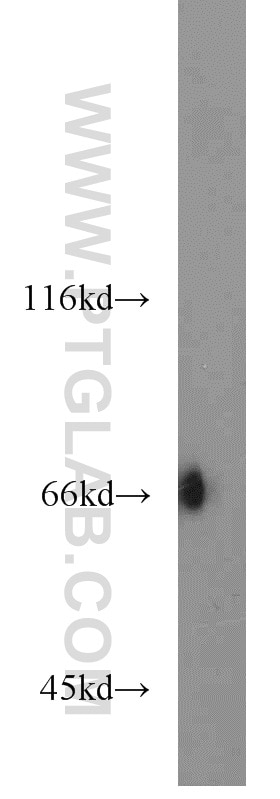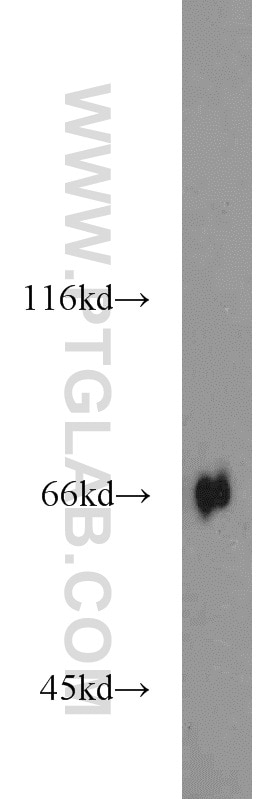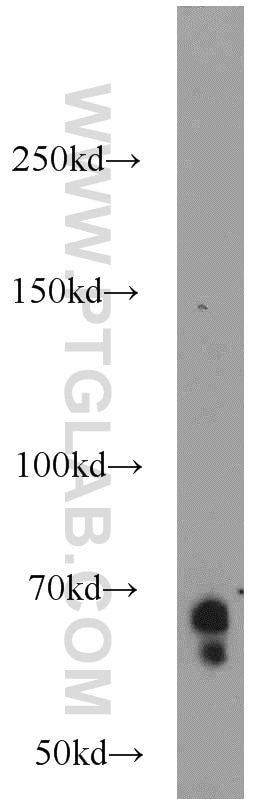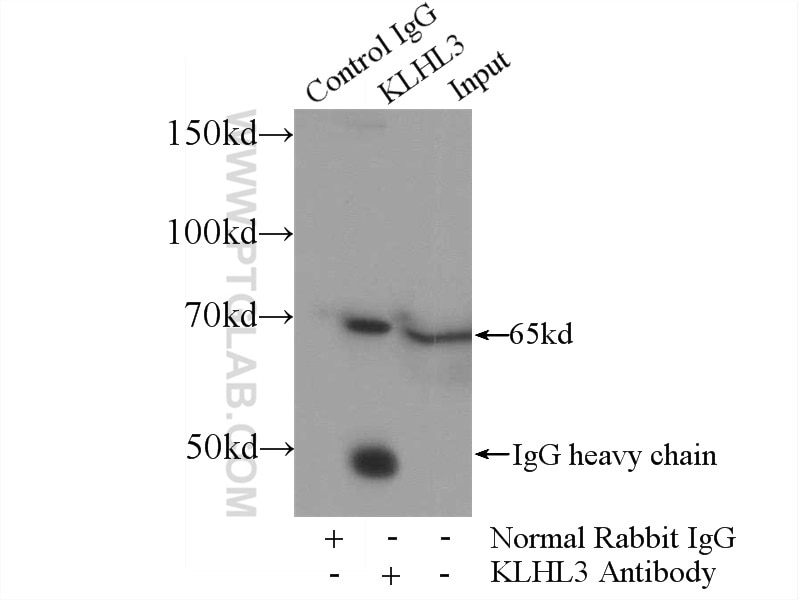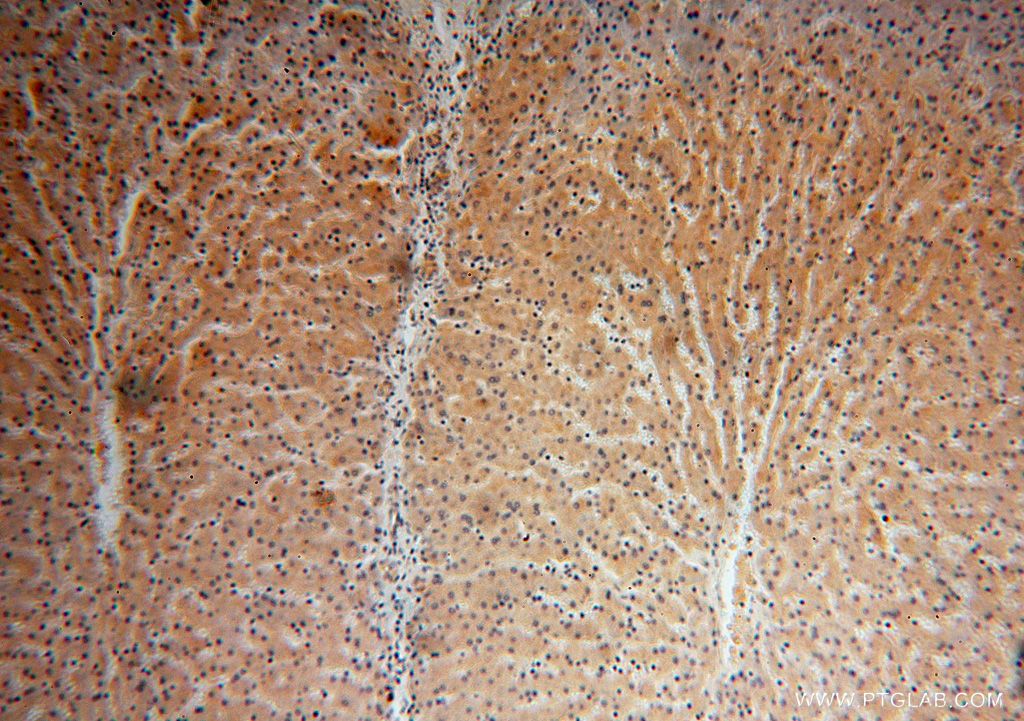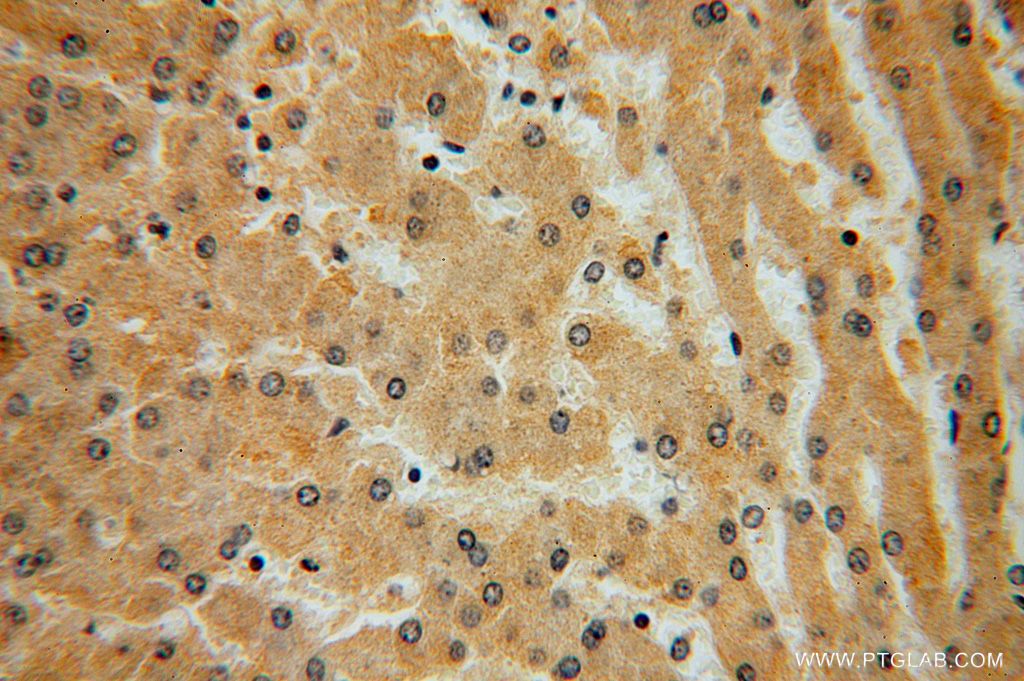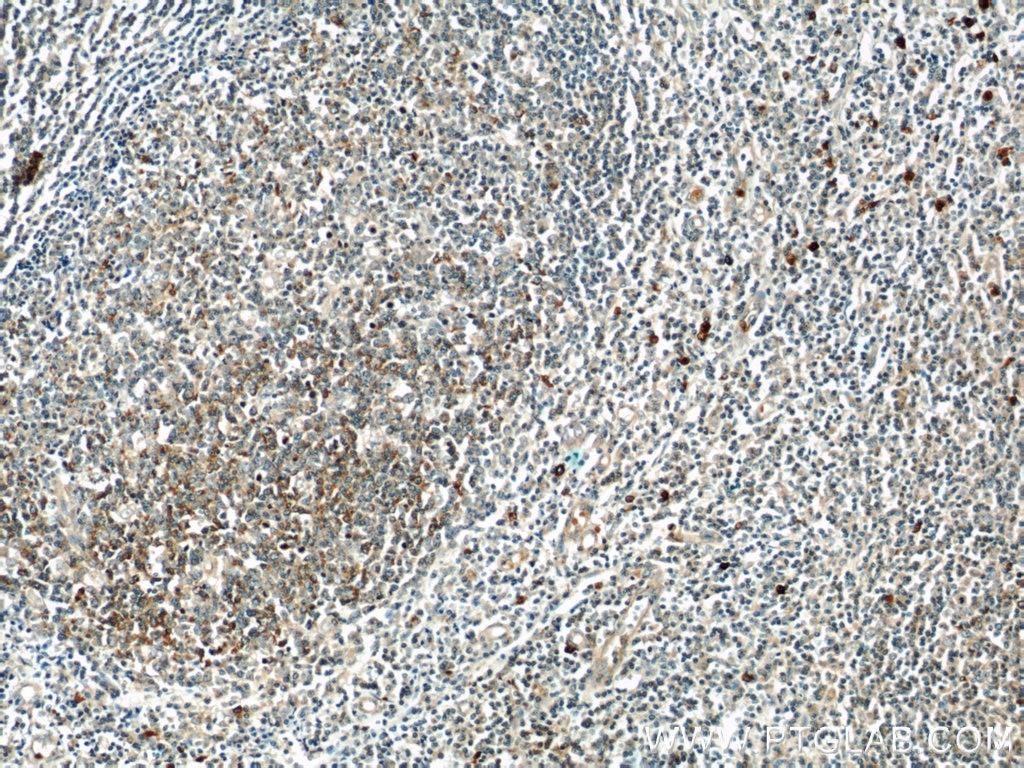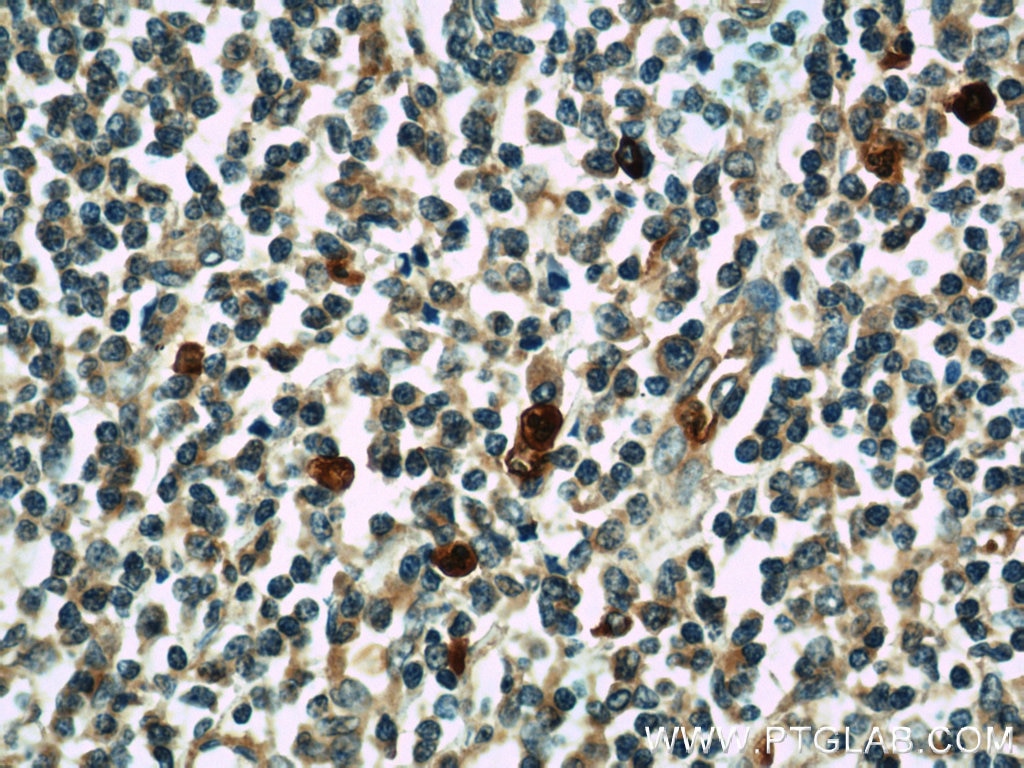- Phare
- Validé par KD/KO
Anticorps Polyclonal de lapin anti-KLHL3
KLHL3 Polyclonal Antibody for WB, IP, IHC, ELISA
Hôte / Isotype
Lapin / IgG
Réactivité testée
Humain, rat, souris
Applications
WB, IP, IF, IHC, ELISA
Conjugaison
Non conjugué
N° de cat : 16951-1-AP
Synonymes
Galerie de données de validation
Applications testées
| Résultats positifs en WB | cellules HepG2, cellules HL-60, cellules Jurkat, tissu de thymus de souris, tissu hépatique de rat, tissu hépatique de souris, tissu hépatique humain, tissu pancréatique de souris |
| Résultats positifs en IP | cellules HepG2 |
| Résultats positifs en IHC | tissu hépatique humain, tissu d'amygdalite humain il est suggéré de démasquer l'antigène avec un tampon de TE buffer pH 9.0; (*) À défaut, 'le démasquage de l'antigène peut être 'effectué avec un tampon citrate pH 6,0. |
Dilution recommandée
| Application | Dilution |
|---|---|
| Western Blot (WB) | WB : 1:500-1:1000 |
| Immunoprécipitation (IP) | IP : 0.5-4.0 ug for 1.0-3.0 mg of total protein lysate |
| Immunohistochimie (IHC) | IHC : 1:20-1:200 |
| It is recommended that this reagent should be titrated in each testing system to obtain optimal results. | |
| Sample-dependent, check data in validation data gallery | |
Applications publiées
| KD/KO | See 3 publications below |
| WB | See 12 publications below |
| IHC | See 2 publications below |
| IF | See 3 publications below |
| IP | See 1 publications below |
Informations sur le produit
16951-1-AP cible KLHL3 dans les applications de WB, IP, IF, IHC, ELISA et montre une réactivité avec des échantillons Humain, rat, souris
| Réactivité | Humain, rat, souris |
| Réactivité citée | Humain, souris |
| Hôte / Isotype | Lapin / IgG |
| Clonalité | Polyclonal |
| Type | Anticorps |
| Immunogène | KLHL3 Protéine recombinante Ag10580 |
| Nom complet | kelch-like 3 (Drosophila) |
| Masse moléculaire calculée | 65 kDa |
| Poids moléculaire observé | 65 kDa |
| Numéro d’acquisition GenBank | BC034035 |
| Symbole du gène | KLHL3 |
| Identification du gène (NCBI) | 26249 |
| Conjugaison | Non conjugué |
| Forme | Liquide |
| Méthode de purification | Purification par affinité contre l'antigène |
| Tampon de stockage | PBS avec azoture de sodium à 0,02 % et glycérol à 50 % pH 7,3 |
| Conditions de stockage | Stocker à -20°C. Stable pendant un an après l'expédition. L'aliquotage n'est pas nécessaire pour le stockage à -20oC Les 20ul contiennent 0,1% de BSA. |
Protocole
| Product Specific Protocols | |
|---|---|
| WB protocol for KLHL3 antibody 16951-1-AP | Download protocol |
| IHC protocol for KLHL3 antibody 16951-1-AP | Download protocol |
| IP protocol for KLHL3 antibody 16951-1-AP | Download protocol |
| Standard Protocols | |
|---|---|
| Click here to view our Standard Protocols |
Publications
| Species | Application | Title |
|---|---|---|
Nat Genet KLHL3 mutations cause familial hyperkalemic hypertension by impairing ion transport in the distal nephron. | ||
Cell Death Differ A viral interferon regulatory factor degrades RNA-binding protein hnRNP Q1 to enhance aerobic glycolysis via recruiting E3 ubiquitin ligase KLHL3 and decaying GDPD1 mRNA. | ||
J Am Soc Nephrol Combined Kelch-Like 3 and Cullin 3 Degradation is a Central Mechanism in Familial Hyperkalemic Hypertension in Mice. | ||
J Am Soc Nephrol Kelch-Like Protein 2 Mediates Angiotensin II-With No Lysine 3 Signaling in the Regulation of Vascular Tonus. | ||
J Am Soc Nephrol Renal COP9 Signalosome Deficiency Alters CUL3-KLHL3-WNK Signaling Pathway. | ||
Hum Mol Genet Impaired degradation of WNK1 and WNK4 kinases causes PHAII in mutant KLHL3 knock-in mice. |
